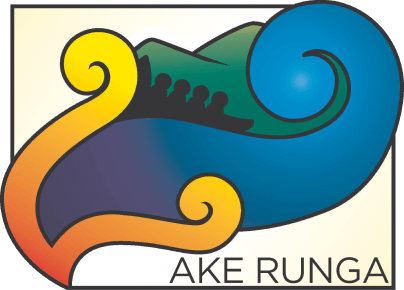

Structured Literacy vs Balanced Literacy
The Bombay way is a blended literacy approach - Paul Petersen May 2023
Comparing Balanced Literacy vs Structured Literacy
Both the balanced literacy approach and the structured literacy approach are widely used in New Zealand to teach literacy skills to students. While they have some similarities, they also have distinct differences in terms of instructional methods and philosophical underpinnings. Here's a comparison between the two approaches:
The Balanced Approach
The balanced literacy approach is a comprehensive approach to teaching literacy that aims to develop students' reading and writing skills through a combination of whole language and phonics instruction. It integrates various instructional strategies and emphasizes the importance of engaging students in meaningful literacy experiences.
The Structured Approach
The structured literacy approach is a systematic and explicit method of teaching literacy that focuses on the structure of language, including phonemic awareness, phonics, vocabulary, fluency, and comprehension. It aims to provide a solid foundation in reading and writing skills by breaking down language into its constituent parts.
Key Features
1. Whole language focus: It emphasizes reading for meaning, using context cues, and making connections to prior knowledge.
2. Emergent reading and writing: It promotes early exposure to reading and writing, allowing students to develop literacy skills through exploration and experimentation.
3. Guided reading: Students are grouped based on their reading levels, and teachers provide targeted instruction and support during small group reading sessions.
4. Language-rich environment: Students are exposed to a print-rich classroom environment, including a wide range of books, writing materials, and literacy activities.
Key Features
1. Systematic and explicit phonics instruction: It teaches phonemic awareness, letter-sound relationships, and decoding skills in a structured manner.
2. Sequential skill development: Skills are taught in a specific order, building upon each other, ensuring a logical progression of learning.
3. Multi-sensory instruction: It incorporates multiple senses, such as sight, hearing, and touch, to enhance learning and reinforce concepts.
4. Direct instruction: Teachers provide explicit instruction, modeling, and guided practice to ensure students acquire necessary skills.
The pros and the cons
Promotes a love for reading and writing
Lack of systematic phonics instruction
Encourages student choice and autonomy
Inconsistent skill development across students
Provides exposure to authentic literature and diverse texts
May not adequately address the needs of struggling readers
Provides a strong foundation in phonics and decoding skills. It is slow paced.
May be perceived as too rigid or mechanical.
Does not focus on comprehension of high order thinking.
Systematic approach ensures consistent skill development Limited focus on reading for meaning and comprehension
Effective for students with dyslexia and other learning difficulties
Less emphasis on student autonomy and choice
While structured approaches can standardise teaching practices, they may also limit teacher autonomy and the ability to tailor instruction to individual student needs. Effective teaching requires a balance between structure and flexibility, allowing teachers to use their professional judgement to meet students' needs (Darling-Hammond et al., 2008). Moreover, a strictly structured approach might not accommodate the varying developmental rates of children, particularly those from diverse linguistic and cultural backgrounds
The Bombay Way - is Blended Literacy
It's important to note that the choice between the two approaches depends on various factors, including the needs of the students, the preferences of teachers, and the specific context of the classroom. At Bombay we adopt a blended approach, combining elements of both balanced literacy and structured literacy to create a customized approach that suits their students' needs. Many of our students arrive at school with strong foundations and they do not required a structured programme that is below their abilities. They would get bored and they would easily switch off.
It is important for parents to note that politics plays a huge role in education. Trends are often pushed because there are political agenda's at play. At Bombay school - we ignore the politics and focus on what our data is telling us.
2023 PAT Reading Data
.png)
The graph (above) shows that Bombay school scores above the national mean and the Franklin Kahui Ako cluster of 17 schools. We will monitor this data annually to ensure that our approach is responsive. We will adapt according to what the data shows us.
The Blended Approach - The Bombay Way
A blended approach of balanced literacy and structured literacy in a junior classroom in at Bombay school aims to incorporate the strengths of both approaches to provide a comprehensive and effective literacy instruction. Here's how such an approach works:
1. **Whole Language and Meaningful Literacy Experiences:**
The blended approach maintains the balanced literacy focus on creating a language-rich environment and engaging students in meaningful literacy experiences. The classroom is filled with a variety of books, reading materials, and writing opportunities. Students have access to a diverse range of texts, including fiction, non-fiction, poetry, and digital resources.
2. **Explicit Phonics Instruction:**
To address the structured literacy component, explicit and systematic phonics instruction is incorporated into the blended approach. Teachers provide direct instruction on phonemic awareness, letter-sound relationships, and decoding skills. They follow a structured scope and sequence to ensure students acquire phonics skills in a logical and progressive manner.
3. **Guided Reading and Small Group Instruction:**
In line with the balanced literacy approach, guided reading sessions are conducted in small groups based on students' reading levels. During these sessions, teachers provides targeted instruction and support, focusing on comprehension strategies, vocabulary development, and fluency. The structured literacy element is integrated by incorporating phonics activities and word work specific to each group's needs.
4. **Individualized Instruction and Differentiation:**
A blended approach allows for individualized instruction and differentiation to cater to the diverse needs of students. Teachers assess students' literacy skills regularly and adjust their instruction accordingly. Students requiring additional support or intervention receive targeted instruction, including explicit phonics lessons and interventions based on their specific needs.
5. **Language and Literacy Integration:**
The blended approach emphasizes the integration of language and literacy skills. Students engage in activities that promote speaking, listening, reading, and writing simultaneously. For example, they might participate in interactive read-alouds, where they listen to a story, engage in discussions, and then write or draw their responses.
*Authentic Assessment:**
The blended approach utilizes a range of assessment methods to monitor students' progress. This could include informal observations, running records, reading conferences, and performance-based tasks. Assessment data informs instruction and help identify areas where students require additional support or extension.
To effectively implement a blended approach, teachers would benefit from ongoing professional development and collaboration opportunities. This would ensure they have the necessary knowledge and skills to integrate the two approaches effectively and meet the diverse needs of their students.
By blending the balanced literacy and structured literacy approaches, the junior classroom at Bombay School provides a balanced and comprehensive literacy instruction that promotes both reading for meaning and the development of foundational skills. This approach caters to the individual needs of students while fostering a love for reading and writing.

